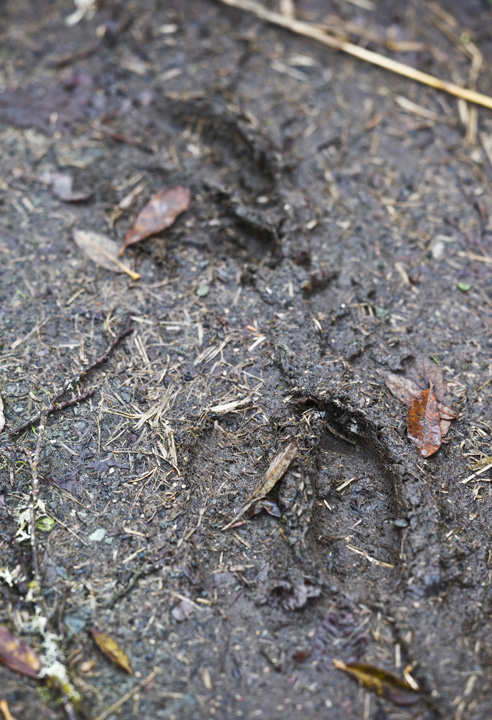Early October brought us an unprecedented stretch of lovely weather: cool and crisp in the morning, in the 50s by midday, and wonderful sunshine. Termination dust outlined the highest peaks against a brilliant blue sky. This was Juneau in October!? All those who regularly flee to other climates at this time of year were missing a real treat.
On one of those remarkable days, I strolled down the shore of Mendenhall Lake. Freezing days up high and recent lack of rain meant that the lake level was very low and the beach was correspondingly wide (and rearranged in a few places, presumably by jökulhlaups last summer). Easy walking, but I didn’t get very far — the ground was too interesting. The silty mud was littered with tracks of a vibrant community of critters who had left evidence of their passage.
The most numerous tracks were those of a variety of invertebrates, crisscrossing over the mud. Some had tunneled just under the surface, leaving a convoluted ridge going (apparently) nowhere. Others trailed over the mud, making long, shallow grooves, some smooth and some dotted with lots of tiny pits. I sure wish I knew anything about who and what they were doing.
Birds were represented by a small songbird that hopped, another about the size of a jay, and some ducks. A heron had minced along with strides so short that the footprints almost overlapped.
Two bears, one larger than the other, left their marks. There were prints of what I would like to call an otter, but strangely no webs between the toes were evident. Lots of mink tracks and a trail left by either a very small mink or a weasel. Beaver prints just below a little dam. Plenty of signs of porcupine, both tracks and scat piles, obviously made over a period of several days. The famous tail-drag marks were only sometimes visible; clearly, the tail had often been held above the mud. There were lots of old and new deer tracks, and signs of a moose are reported from both sides of the lake. I was captivated by the trail of a very small mammal (vole or shrew) that had trotted along a little rivulet and then forded the stream, leaving a delicate chain of tiny prints beside and under the water.
The big excitement was provided by what might have been a wolverine or two. Four different observers, in later consultation, could not conjure up a fully acceptable alternative. After eliminating all the critters we thought it was not, and consulting the books (which are somewhat contradictory), wolverine was the likely candidate. But none of us have had much experience with the tracks of this critter, so it remains a bit of a puzzle — maybe just wishful thinking! Wolverines are known to range widely, especially outside the denning season, and their tracks have been suspected here in other years.
For a while, I sprawled on a sand berm, along with a friend, soaking up some rays and watching a flock of widgeon in a large pool. They were quite far away, and it took us several looks to be sure of what they were. An eagle flew over, sending the whole lot up into the air in a great flurry. They circled several times and came back in small bunches until the flock was restored. Then a smaller raptor made two quick passes over the reassembled flock, causing only short-lived fluttering.
A few days later, I walked the shoreline again, in a different area. There was a skim of ice on the lake, about two millimeters thick. As the day warmed up, small sheets of ice moved in to the waterline, even in the absence of any visible wavelets or surges. Magically, these sheets climbed up onto the beach, out of the water, sometimes poking over the beach rocks and up a foot into the air; they slithered over each other and stacked up in sheaves. Some of them slid quietly back into the water, only to arrive once more and slide up on the beach again. The sheets developed cracks, so where they lay over each other there was a complex and decorative network of cracks. We could hear the ice talking to itself from a little distance away; it popped and screeched, crackled and whistled, sighed and groaned, in an extended conversation. I would love to know what made the ice climb onto the beach!
Here’s another little tidbit on another matter. The biggest bridge on the much-used Salmon Creek trail had tilted precariously, because one of the supporting beams had cracked and sagged. The bridge has been repaired: new beams, new tread, new rails. Thank you, AEL&P!
• Mary F. Willson is a retired professor of ecology.

